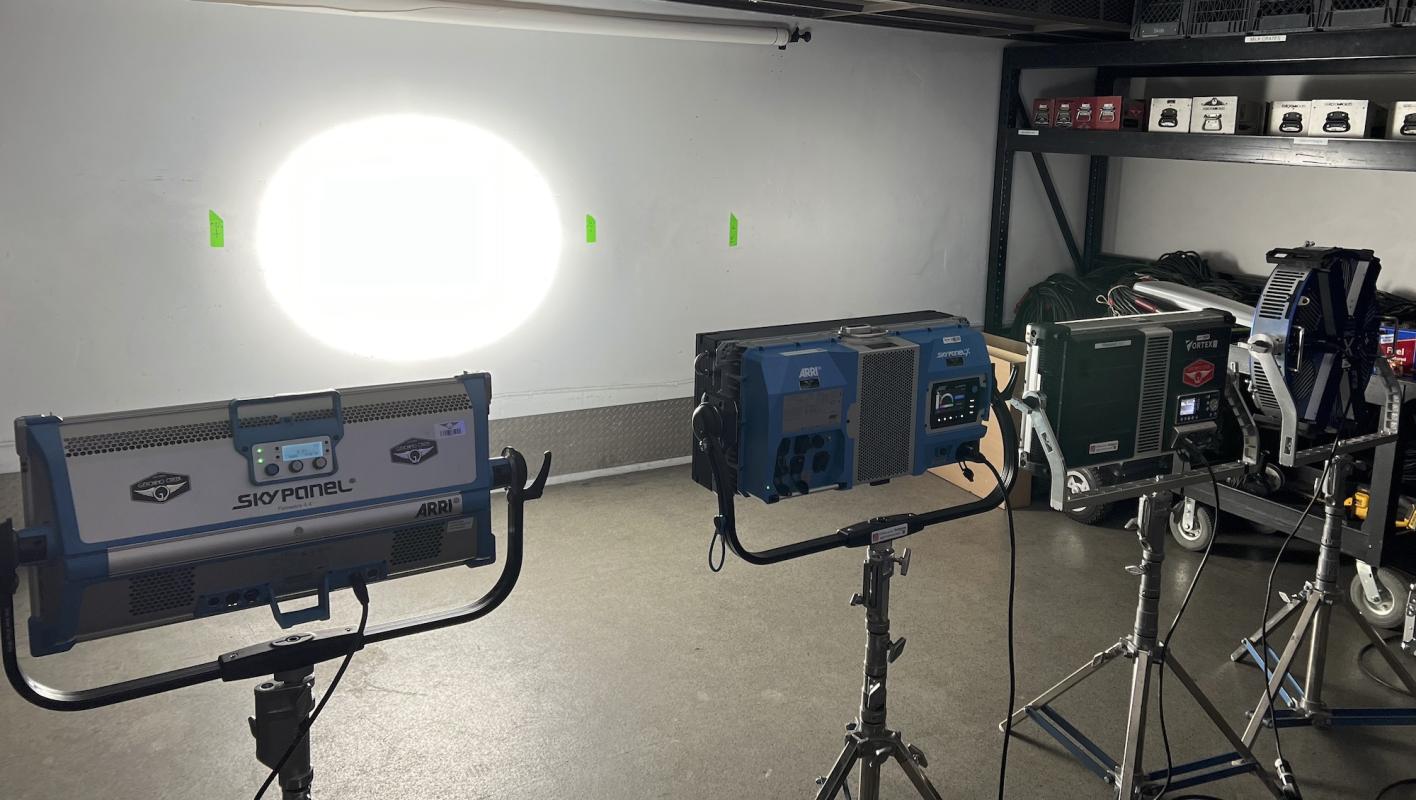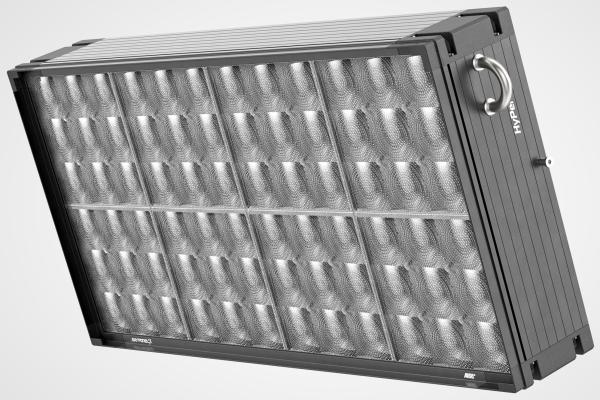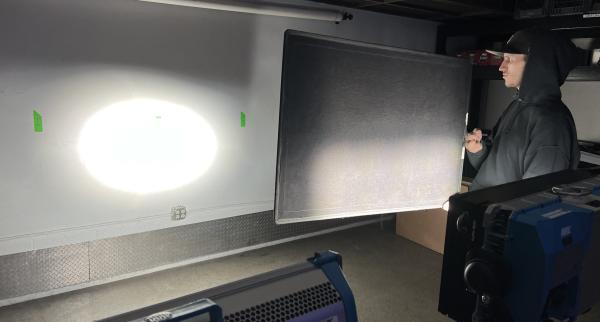The big question about Arri’s new SkyPanel X is: how does it compare against the established industry favorites?
Using a scientific laboratory (AKA: our loading bay), we conducted a series of tests to find out which light shines the brightest.
It’s important to note these lights need to be measured not only in the intensity of their output (FC or foot candles), but also the quality of their beam. These lights are all very different from each other. Without factoring in the quality and diameter of their beam spread, the measurement of their intensity becomes irrelevant.
Here are our four main contenders:
- ARRI S60 SkyPanel (600w LED)
- ARRI SkyPanel X21 (800w LED)
- Creamsource Vortex8 (650w LED)
- Creamsource SpaceX (1200w LED)

The Hyper Optic – Let’s Talk About Quality

The Hyper Optic accessory is what impressed us the most about the SkyPanel X system. We started the test by measuring the center beam of the SkyPanel X + Hyper Optic accessory against the Vortex 8 with no diffusion. Effectively, both lights were now using their optics to project their LED array into the narrowest beam possible: The beam spread on the SkyPanel X with Hyper Optic is 11 degrees vs 20 degrees on the Vortex 8.
The narrow beam from the SkyPanel X is impressive. It falls off quickly, reminiscent of a Source-4 leko; which is another test on our to-do list (Lustr +8 with 10 degree XDLT barrel vs. SkyPanel X with Hyper Optic accessory).
With both lights exactly 10ft away from the light meter, the SkyPanel X gave us 2100 FC, while the Vortex measured at 1090 FC (both 5600k). For those of us who understand inverse square in lighting, we know the output is the same: back the SkyPanel X off 50% and the beam spread and intensity will match the Vortex8. So the takeaway is simple: One light is not significantly brighter than the other. Only the quality is different.
Weighty Expectations
Now other factors come into play, such as weight and size. The Vortex8 loses an accessory (the diffusion) to throw a narrow beam, while the SkyPanel X adds a bulky accessory (10 lb Hyper Optic) to achieve a similar spread. But we’re interested to see how this changes when using the X23 configuration of stacking three Skypanel X’s on the X23 yoke. Then you’re on a crank stand or condor, so weight is not as important.

It’s also important to note a panel light is difficult to cut with a flag due to the larger size of the source. This is the case with any panel light, but it’s exacerbated when converting a large format source into a narrow beam.
While the added weight might seem cumbersome, the Skypanel X is well designed and feels right on a combo stand. It would also be a great source used in a condor or on the ground, aimed straight up at a bounce, rigged in a stage or lift. But so is a Vortex 8 and a SpaceX, which is brighter than all LED’s compared in this test.
Final Results
The classic S60 still shines through. When considering weight vs. output, the S60 performs best. On menace arm rigs the ballast can be rigged on the weight side, rending a weight of 23 lbs. at the head. Secondly, our list price for the S60’s has been half of the competing SkyPanel X and Vortex 8 units for the last couple of years. This is intentional so our customers have an economical option when building larger rigs or working lower budget jobs. The S60 is the best LED watt per dollar.
With dome attachments, the Vortex 8 slightly outperforms the SkyPanel X21. Again, the classic S60 w/standard diffusion panel still performs very well with wide diffused throws. The differences are negligible.
The secret winner of this experiment is the SpaceX. It’s brighter than all the other units! However it’s pretty heavy and a little awkward compared to the standard panel lights. But if you need more punch and don’t want to deal with a Skypanel S-360, then this is a great option.
Here is a link to the meter readings takes during our test: Lighting Test Results
Gaffer’s Corner
On a personal note, an experienced gaffer doesn’t fall for the siren song of consumerism. Lighting equipment manufacturers, and influencers who simply echo their marketing, can make you feel like your gear is outdated. But these voices often do not come from a place of experience.
Trust your own judgment, regardless of what’s trending. Learning to light is about the art and the craft- not just the gear. Where you place the light matters far more than what brand it is, or how new it might be. In fact, some of the oldest lights remain among the best.


